The ultra-limited hypercar segment has been redefined as McLaren unveiled the three-seat Speedtail, the fastest yet most comfortable model the company has ever produced.
Featuring the punchiest powerunit and sleekest, most aerodynamically efficient body ever penned by the UK-based engineering team, the Speedtail has been designed as the world's first 'Hyper-GT', capable of travelling in extreme luxury at a top speed of 403km/h - with two passengers and two boots to boots full of luggage.
“McLaren has never built a vehicle like the Speedtail before," said McLaren CEO Mike Flweitt. "As our first ‘Hyper-GT’, the Speedtail is the ultimate McLaren road car; a fusion of art and science that combines an astonishing maximum speed with an iconic central-driving position and a truly pioneering approach to bespoke personalisation."
"A ground-breaking hybrid powertrain sits within a lightweight carbon fibre body reminiscent of sleek ‘streamliners’ that once set world speed records, while the luxurious three-seat cockpit offers a sublime combination of an incredible driving experience, unmatched individualism and innovative materials never seen before in a road-going vehicle.”
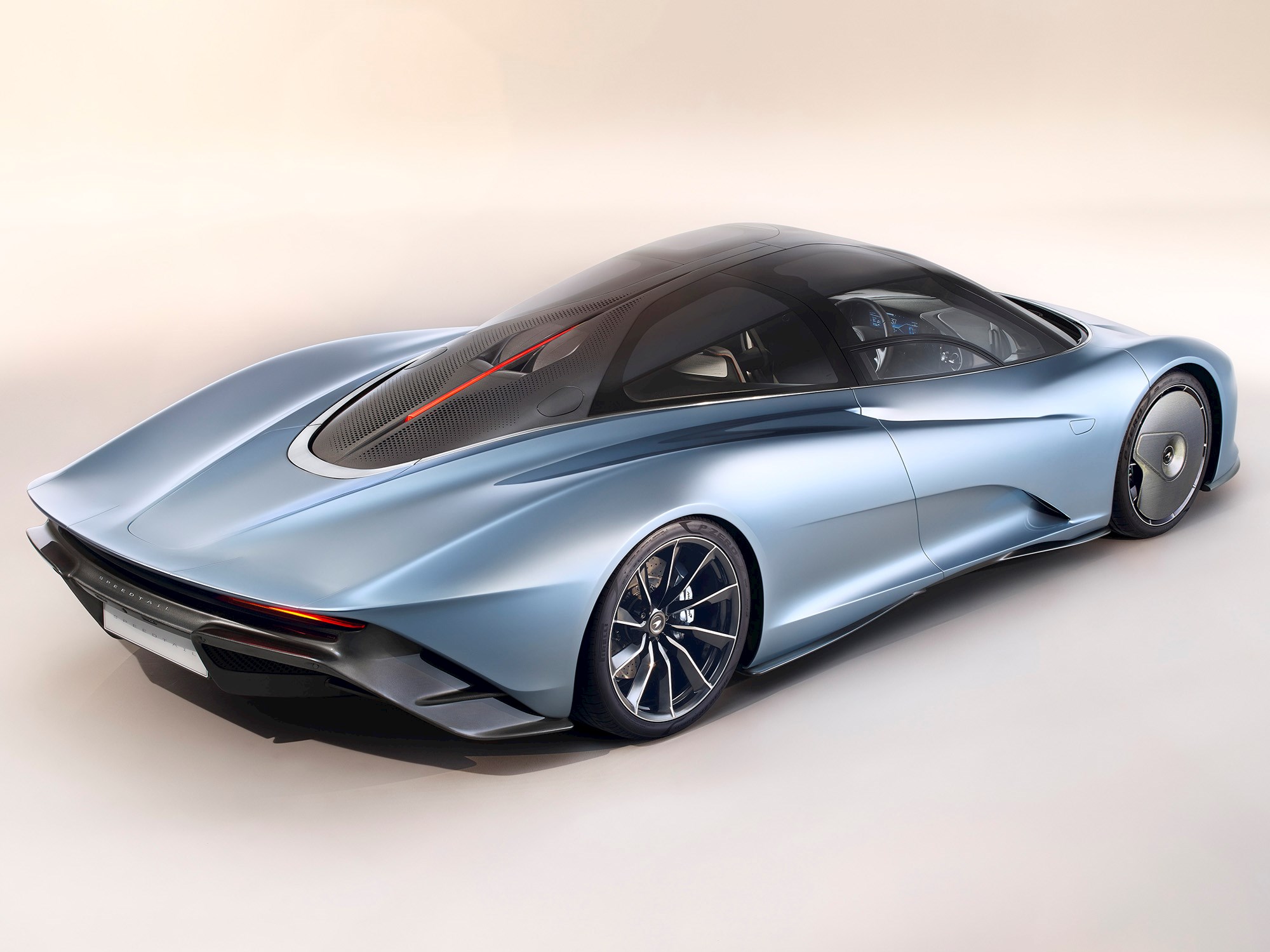
The Speedtail is the third top-tier Ultimate Series car McLaren has built, following on from the hybrid P1 and track-focused Senna. Constructed around a bespoke Monocage carbon fibre structure, all-carbon fibre body, aluminium active suspension and carbon ceramic brakes, the McLaren Speedtail weighs in at only 1,430kg dry.
McLaren say the powertrain is a 'pioneering' petrol-electric hybrid developing 1,050PS (761kW, 1035 metric HP), although the unit's finer details have been kept under wraps until the first models are delivered.
But McLaren have confirmed that the Speedtail will set a new benchmark for performance with the three-seater capable of accelerating from 0-300km/h in just 12.8 seconds and onto a top speed of 403km/h. For reference, the McLaren P1 would linger by as much as four seconds behind the Speedtail, with McLaren's first hybrid hypercar accelerating from 0-300km/h in 16.5 seconds.
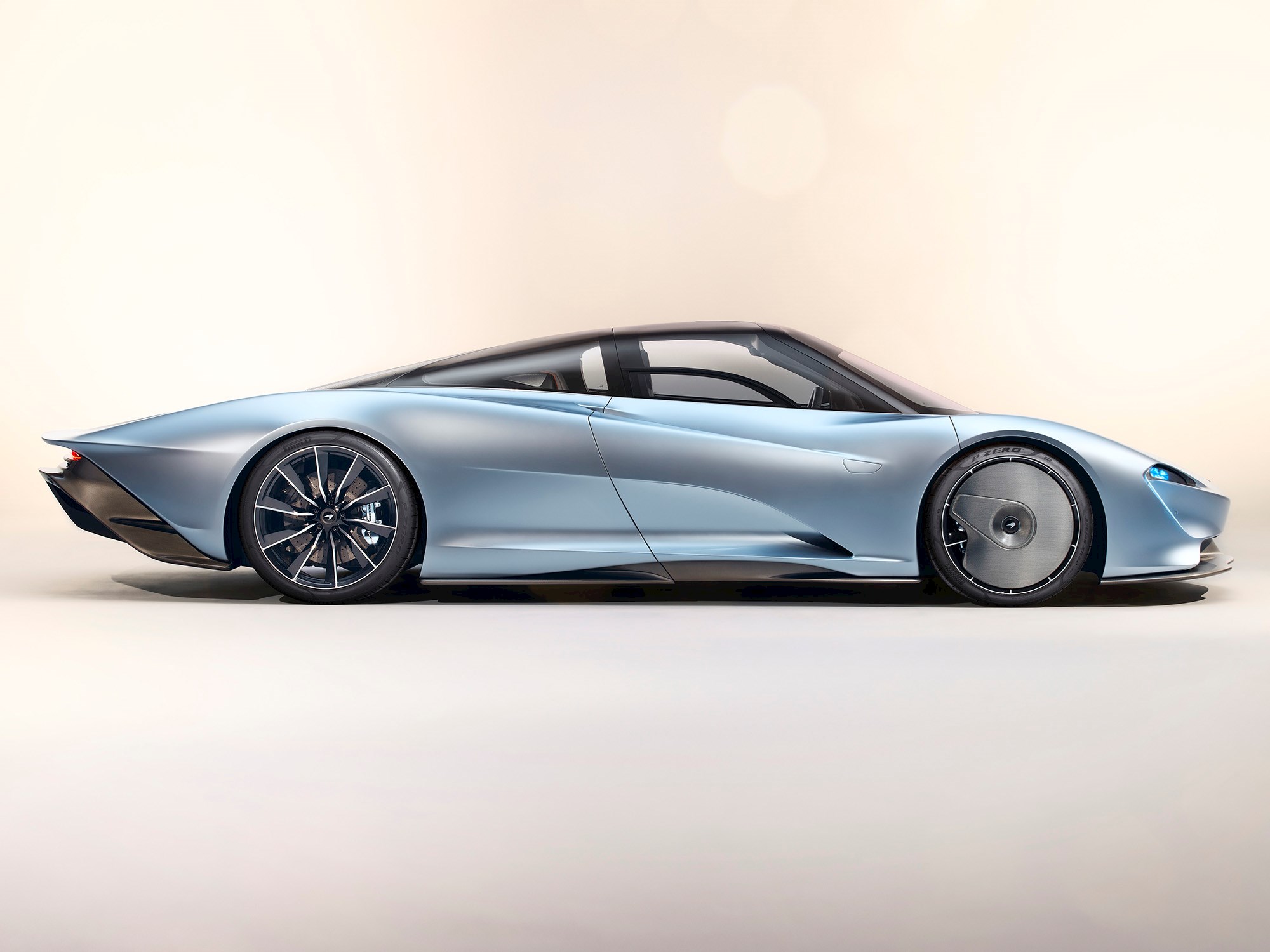
Top speed is achieved in a unique 'Velocity' drive mode which has been developed specifically for the Speedtail, optimising the hybrid powertrain and active aerodynamics. In Velocity model the active rear 'ailerons' are tailored to high speed driving and the digital rear-view cameras can be retracted to further improve drag. Velocity Active Chassis Control also lowers the Speedtail by 35mm, leaving the highest point on the roof just 1,120mm from the road surface. To cope with the extreme performance a bespoke Pirelli P-ZERO tyre has been designed for the Speedtail and front-wheel static aero covers can be fitted for ultra-low drag.
The McLaren Speedtail is narrower than a McLaren P1, but more than half a metre longer, measuring 5,137mm from nose to tail. With its teardrop shape, every effort has been made to reduce the number of shutlines to ensure air flows over they body as efficiently as possible.
From the front, vertical ducts beneath the full LED headlights are tapered to minimise drag while still feeding cooling air into the Radiators. Airflow that doesn’t enter the ducts is directed over the bonnet and enters two discreet upper front clam intakes. From here, it is ducted through the body and around the wheelarch before exiting out of the lower door vents. This reduces the volume of air travelling around the side of the vehicle, which is prone to separation from the body and resulting turbulence.
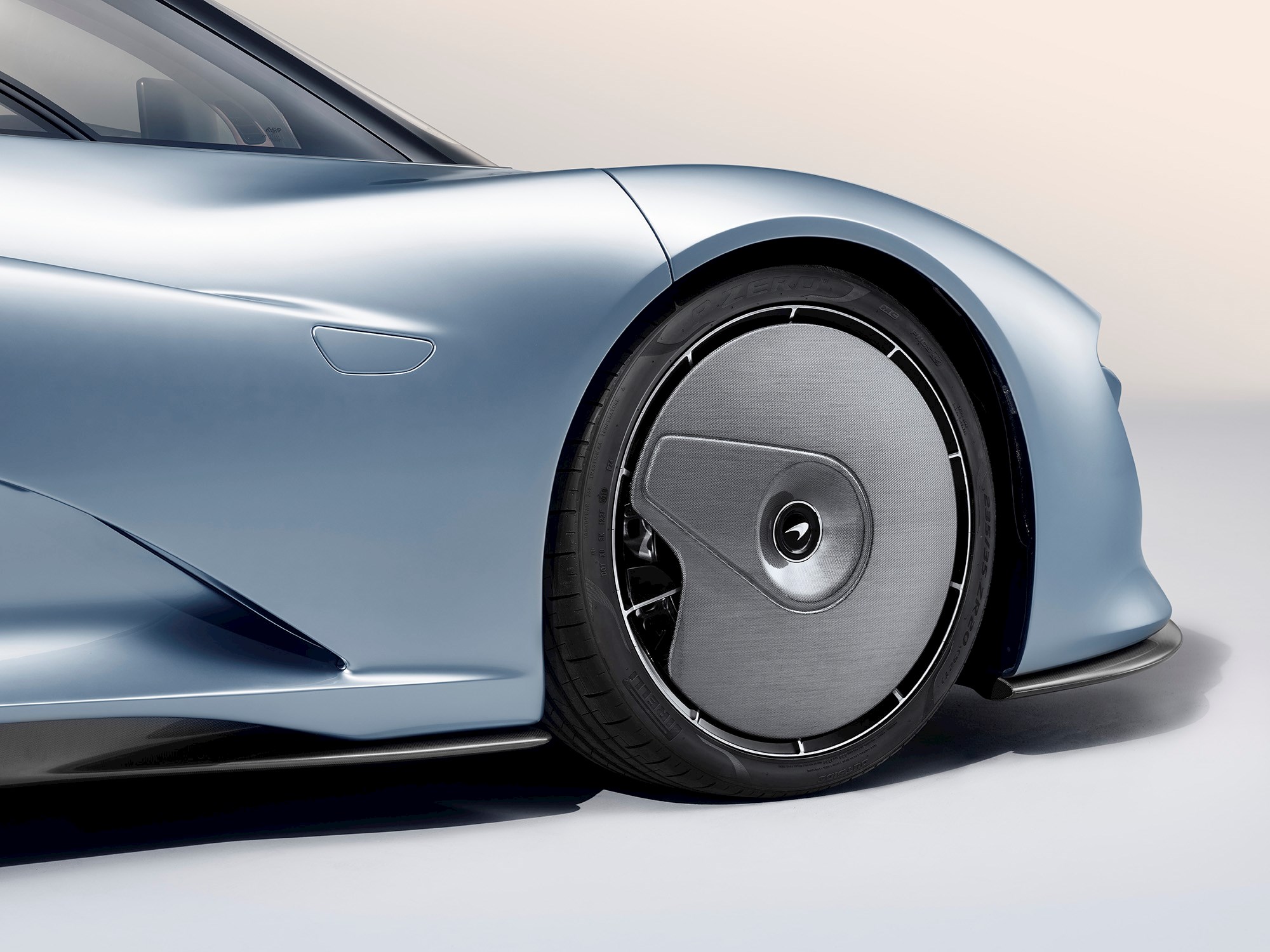
The residual airflow over the nose of the car is directed onto and over the windscreen by a cowling at the trailing edge of the bonnet, then towards the powertrain’s ‘snorkel’ intake on the roof. This inlet, which provides the air intake for the internal combustion engine, is set flush within the roof to reduce drag and cannot be seen when the McLaren Speedtail is stationary. The dramatically elongated tail bleeds off the flow to reduce turbulence.
One of the innovations immediately obvious on the McLaren Speedtail is the introduction of carbon fibre front-wheel static aero covers which remain fixed in position as the wheels rotate, smoothing airflow around what would otherwise be a turbulent aerodynamic area.
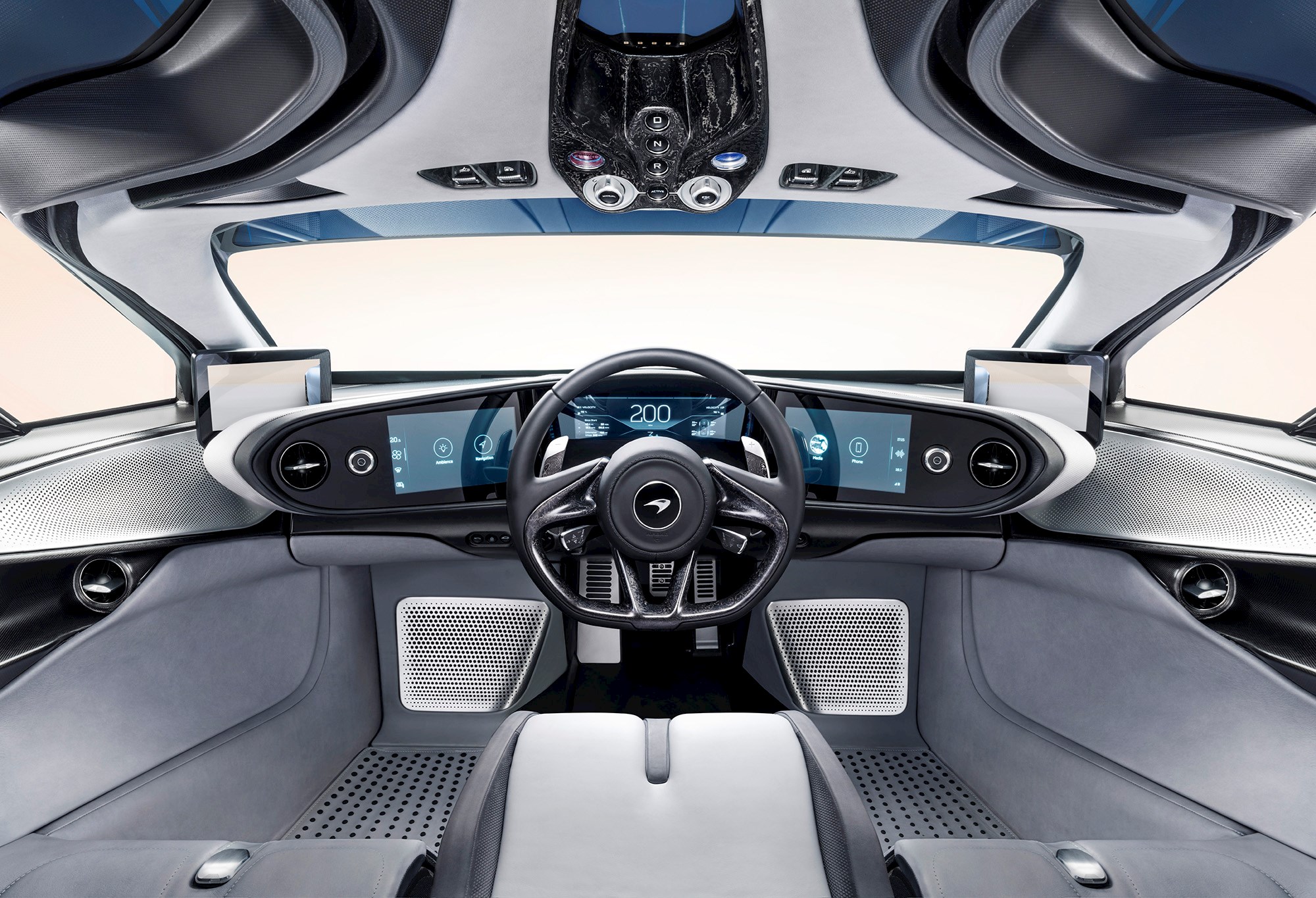
In the cockpit the Speedtail sees the return of the famous three-seat layout first used in the McLaren F1. In front of the drive is an all-ned control system with high-definition displays that remove almost every button and switch traditionally found in a car.
The only buttons that remain - engine start, Active Dynamics Panel and window and door switches – are in panels above the driver’s head. The two passenger seats on either side are fitted directly on top of the Speedtail's carbon fibre chassis.
There is luggage space within both the nose and tail of the vehicle and a bespoke luggage set is available to every owner, with the carbon fibre, leather and metalwork on the cases matched to the interior specification of each Speedtail.
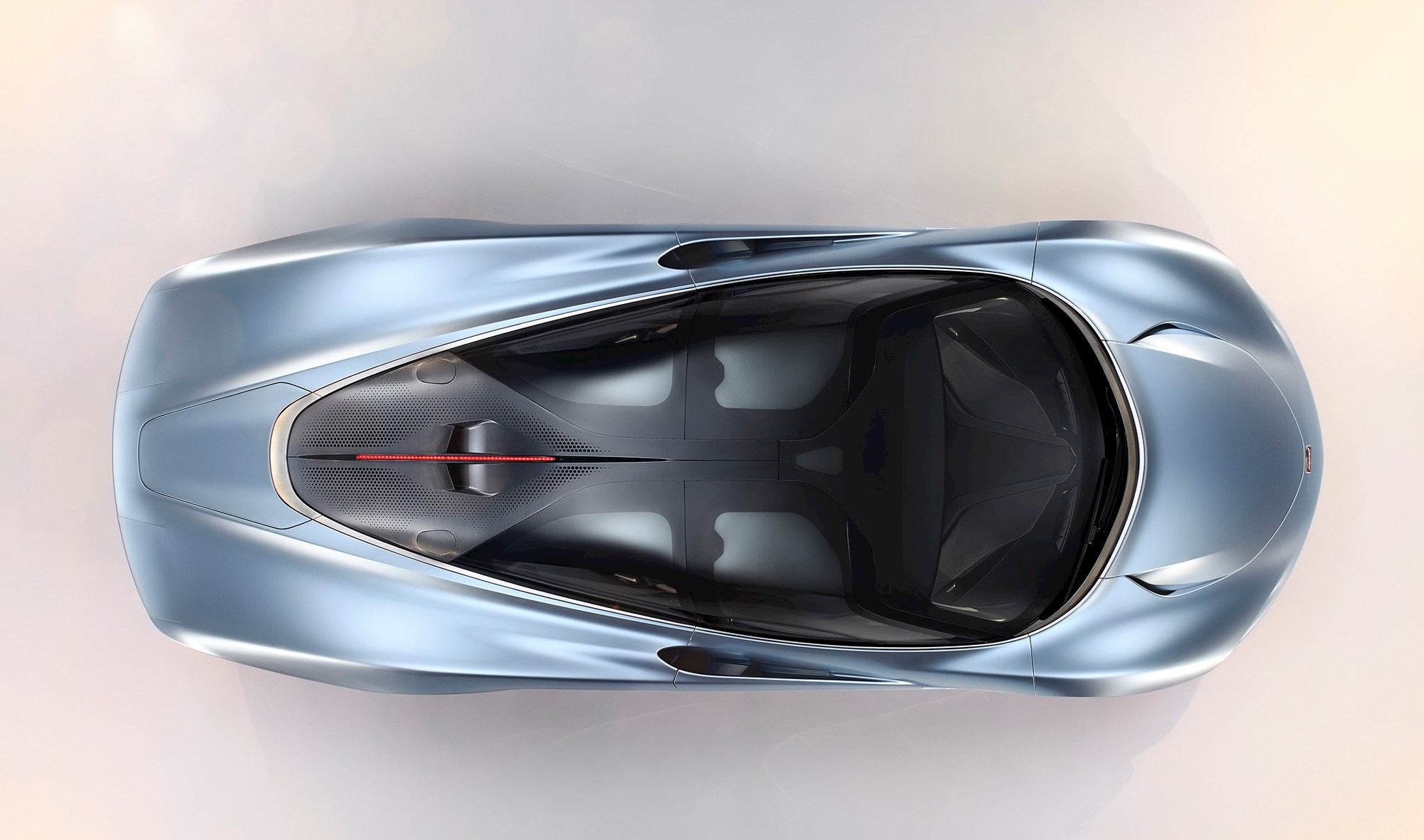
"As an Ultimate Series model, at the pinnacle of the McLaren range, the Speedtail pushes the limits of what is possible technically," said McLaren vehicle line director Andy Palmer.
"Just as the McLaren Senna is the embodiment of extreme aerodynamic technologies and weight saving, so too is the Speedtail – but for this McLaren, the purpose was to achieve a new level of design sophistication and weight reduction in the pursuit of low aerodynamic drag, breath-taking acceleration and extreme velocity.”
Just 106 McLaren Speedtails will be built, all of which have been reserved at a price of from £1.75 million (NZ$3.45 million).
The 106 lucky owners are now in the process of personalising their three-seat hyper GTs ahead of first deliveries scheduled for the beginning of 2020.
Read more: McLaren confirm P1 successor, 18 new hybrid models in $2.3b business plan




















